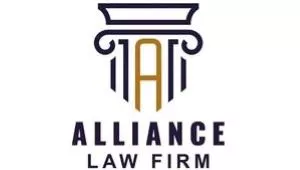The Copyright Act, 2004 was first enacted in 1988 to make provisions, inter alia, for the protection of creative works and the remedy and penalty for the infringement thereof. Sequel to the phenomenal growth in the creative industry, it became imperative to amend the Copyright Act. This has led to the enactment of the Copyright Act, 2022 (which repealed the 2004 Act) to enhance the protection of the rights of copyright owners and impose more reasonable penalties in cases of copyright infringement. We present herewith a comprehensive analysis comparing the Copyright Act of 2004 with the Copyright Act of 2022 and showing the notable differences as outlined in the table below:
| S/N | COPYRIGHT ACT 2004 | COPYRIGHT ACT 2022 |
| 1. Objectives and Application of the Act. | The 2004 Act does not state the Objectives and Application. | The 2022 Act provides for Objectives and Application under section 1(a) - (d). |
| 2. Meaning of Copy | Section 51 of the 2004 Act defines Copy to means a reproduction in written form in the form of a recording or cinematograph film or in any other material form so however that an object shall not be taken to be a copy of an architectural work unless the object is a building or model. | Under Section 108 of the 2022 Act Copy means a reproduction in any form including a digital copy. By this definition, this gives protection and recognition to digital creative works especially online content creation. |
| 3. Works Eligible for Copyright. |
Inclusion of cinematograph films as works eligible for
copyright. |
Replacement of cinematograph films with Audiovisual works as
works eligible for copyright. This appears to be more encompassing
than erstwhile cinematograph films. |
| 4. Ineligibility for Copyright. | Works ineligible for copyright was not provided. |
Works ineligible for Copyright is provided. They include:
|
| 5. Formality for Eligibility of Copyright. |
There was a condition for eligibility of copyright works i.e.,
if sufficient effort has been expended on making the work to give
it an original character etc. |
There is no formality for eligibility of copyright works. |
| 6. General Nature of Copyright. |
This is provided for under Section 6 of the
Act and the channel of communication of all the works
provided by this Section to the Public was through the loudspeaker
or any other similar devices. |
This is provided for under Sections 9 to 13 of the
Act and the channel of communication of all the works
provided by these Sections to the Public is through Wire or
Wireless Means. |
| 7. Nature of Copyright in Artistic Work. | This is provided for in Section 6 (b) of the Act but the broadcast and communication of artistic work was not made available to the public. SECTION 6 (b) |
This is provided for in Section 10 of the
Act and it made provision for the communication and
broadcast of artistic work to the Public and it is made available
to the Public through Wire or Wireless Means. |
| 8. Nature of Copyright in Broadcast. |
This is provided for in Section 8 of the Act but the right of
fixation of broadcast was not provided. |
This is provided for in Section 13 of the Act and also broadened
the nature of copyright in broadcast by including the right of
fixation of the broadcast. Cable operators who merely retransmit the broadcasts of
broadcasting organizations are precluded from enjoying exclusive
rights in copyright in broadcast. This was added to protect
copyright in broadcast. |
To view the full article, click here.
The content of this article is intended to provide a general guide to the subject matter. Specialist advice should be sought about your specific circumstances.

